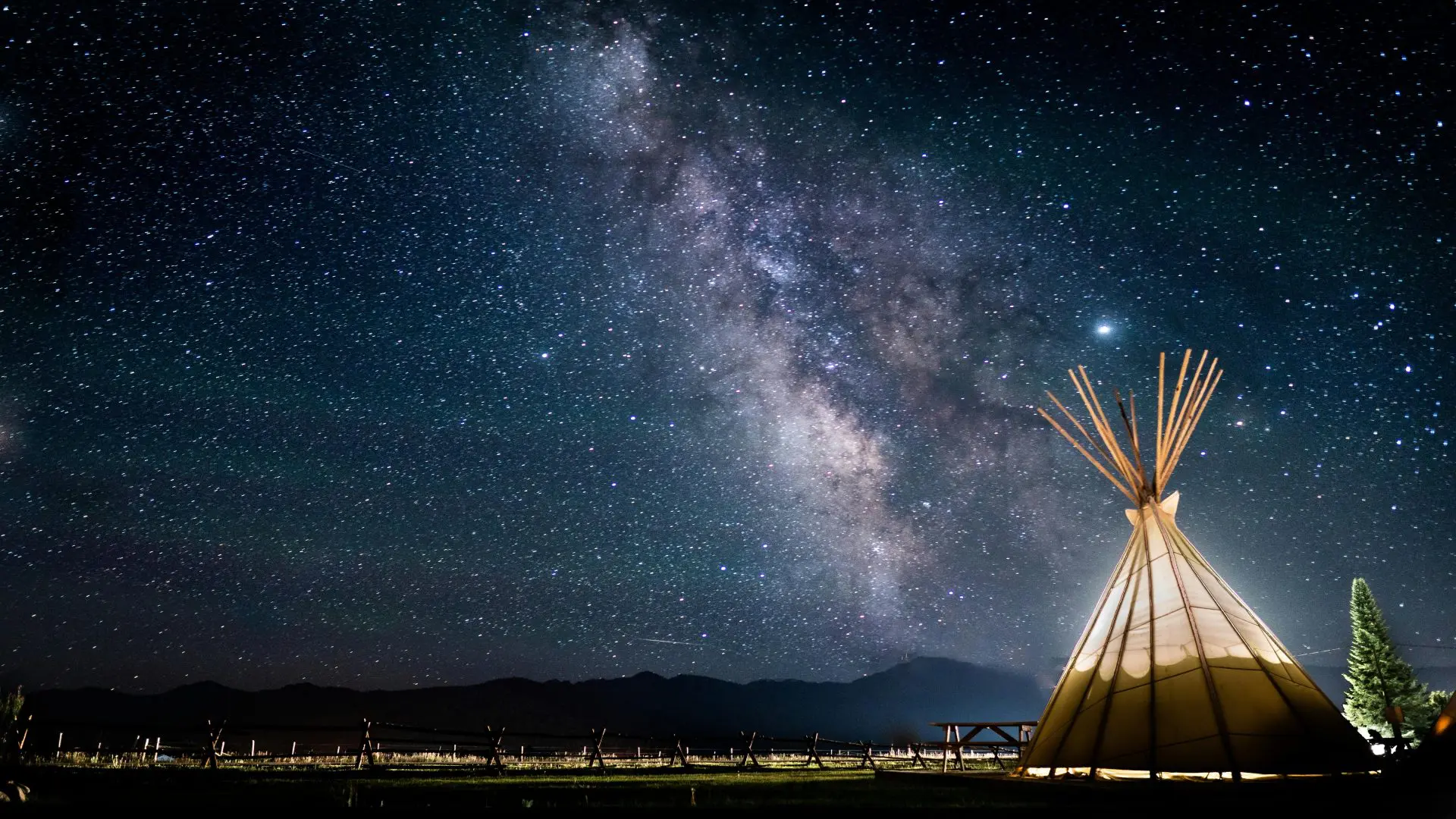The Untold Truth About the Salem Witch Trials

Looking for more amazing products? Check out our online store and explore our collection here! Happy shopping!
Before diving in, please note: This post is for informational purposes only. If you’d like to know more about how we approach topics, feel free to check out our friendly Disclaimer Page.
Hey there, amazing readers! 
We’re committed to delivering quality posts, and your support (even just sticking around despite the ads) means everything to us. So, bear with us, and thanks for helping us keep the good vibes rolling. Now, on to the fun stuff!
TRANSLATE BUTTON AT THE END OF THE ARTICLE
A Quick Overview
When we think about the Salem Witch Trials, what often comes to mind is hysteria, fear, and injustice.
These trials, which took place in 1692 in colonial Massachusetts, have become a symbol of mass paranoia and the consequences of scapegoating.
Yet, there’s so much more beneath the surface of this historical tragedy.
Today, let’s dive into the untold truth about the Salem Witch Trials, exploring the fascinating details and the cultural backdrop that made this event a pivotal moment in American history.
The Mysterious Beginnings of the Salem Witch Trials
The Salem Witch Trials began in January 1692, igniting a frenzy that would last until May 1693.
But how did it all start?
It began with a group of young girls in Salem Village, who claimed to be possessed by the devil.
They exhibited strange behaviors, such as convulsions and fits.
Many historians suggest that these girls were suffering from a combination of social pressures, strict religious expectations, and possibly even ergot poisoning from contaminated rye.
The initial accusations involved three women: Tituba, Sarah Good, and Rebecca Nurse.
Tituba, an enslaved woman from the Caribbean, played a particularly crucial role.
Her foreignness made her an easy target for suspicion.
The girls’ claims quickly spiraled out of control, leading to a widespread witch hunt.
The village, already plagued by conflicts and the stresses of frontier life, was ripe for paranoia.
The trials revealed a community paralyzed by fear.
Accusations spread like wildfire, leading neighbors to turn against one another.
The initial spark ignited a raging fire, burning through the community’s fabric.
Witchcraft became a convenient explanation for misfortunes, from failing crops to illness.
Thus, the trials marked not just a moment in history, but a reflection of societal tensions simmering beneath the surface.
Meet the Key Players: Who Were the Accusers?
To truly grasp the Salem Witch Trials, we must consider the key players involved.
The principal accusers were the young girls of Salem Village, particularly Betty Parris and Abigail Williams.
Betty was the daughter of the village minister, Samuel Parris, and Abigail was his niece.
Their claims gave credence to the hysteria, making their words powerful.
But the scene was not solely filled with children.
Many adults jumped on the bandwagon, eager to settle old scores.
Individuals like Ann Putnam Jr. and Mercy Lewis took part in the accusations.
They articulated their fears and frustrations through witchcraft allegations, turning personal grievances into public accusations.
The accusers often had their own motivations.
For example, the Putnam family had longstanding feuds with others in the village.
Thus, the trials opened a Pandora’s box of hidden animosities.
It was a perfect storm of community strife, where accusations could lead to social and political advantage.
Interestingly, the accusers often played the role of victims, claiming that they were under the influence of witches.
This tactic shifted the focus and sympathy towards them, allowing them to evade blame.
The trials transformed them from ordinary village girls into powerful figures, fueling the frenzy that would grip the entire community.
Superstitions and Beliefs: A 17th Century Perspective
Superstitions ran rampant in 17th-century colonial America.
The people of Salem lived with the constant fear of the supernatural, believing that the devil was an ever-present force.
They viewed the world through a lens of religion and folklore, where signs and omens shaped daily life.
Many believed in the existence of witches—those who had made pacts with the devil to gain supernatural powers.
This belief was deeply rooted in European traditions and was reinforced by the Bible.
The concept of witchcraft was not new; it had been a part of cultural narratives for centuries.
In Salem, these beliefs put everyone on edge, as anyone could be accused of witchcraft.
The idea of spectral evidence—testimony that the spirit or specter of the accused was seen committing harm—was also prevalent.
This form of evidence was notoriously difficult to challenge.
People genuinely believed that their dreams or visions were real, leading to further hysteria.
Moreover, the Puritan faith emphasized a constant battle against evil.
The community’s worldview was black and white, leaving little room for nuance.
This mentality heightened fears and made accusations against neighbors more likely.
The belief system in Salem made it fertile ground for suspicion, leading people to see signs of witchcraft in everyday occurrences.
The Role of Religion in the Salem Witch Hysteria
Religion played a monumental role in the Salem Witch Trials.
The Puritans, who settled in the area, adhered to strict religious codes.
Their faith dictated not only moral behavior but also communal life.
They believed themselves to be God’s chosen people, which intensified their fear of the devil infiltrating their society.
The local clergy, especially Samuel Parris, contributed to the hysteria.
He preached about the dangers of witchcraft and the importance of rooting it out.
His sermons instilled fear in the hearts of the community, positioning witchcraft as a direct assault on their faith.
Parris’s role as both a spiritual leader and a focal point of accusations cannot be understated.
Additionally, the trials represented a broader struggle between the old ways of Indigenous beliefs and the new Puritanical worldview.
The Puritans regarded Native American practices with suspicion and hostility.
They often equated the fear of witchcraft with the fear of the unknown.
This dynamic further complicated the landscape of beliefs and fueled the trials.
Religion also provided a convenient justification for actions taken during the trials.
Accusers often claimed divine inspiration for their accusations, framing their actions as a righteous battle against evil.
This sanctified violence against those accused of witchcraft and created an environment where injustice could thrive in the name of faith.
How Social Strife Fueled the Witch Trials Frenzy
Salem Village was far from a harmonious community.
There were deep rifts among families, particularly between the farming community and the more affluent merchants in Salem Town.
These social divisions exacerbated tensions, as accusations served as a way to settle personal scores and alleviate frustrations.
The village was also recovering from a series of disasters, including military conflicts and economic troubles.
The fear of the unknown, compounded by these hardships, made people vulnerable to scapegoating.
As crops failed and spirits waned, the specter of witchcraft offered a tangible explanation for their misfortunes.
Power dynamics shifted during the trials, with wealthy families often on the side of the accusers and poorer families on the defensive.
This imbalance led to a situation where the vulnerable were further marginalized.
The trials became a stage for the powerful to wield influence and instill fear, creating a cycle of blame that caught innocent people in its grasp.
The resulting paranoia transformed the community.
Neighbors who once could share a cup of coffee were now suspicious of each other.
Friendships crumbled under the weight of accusations, as fear overtook loyalty.
The trials painted the town in shades of betrayal, leading to a catastrophic breakdown of trust.
A Closer Look at the Accused Witches of Salem
As the hysteria escalated, many individuals found themselves accused of witchcraft.
Some were well-known figures, while others were merely marginalized members of society.
The trials became a crucible for the most vulnerable.
Among the accused was Rebecca Nurse, a respected and elderly woman with a strong moral reputation.
Her case illustrates the absurdity of the trials.
She had no enemies, yet she became a target due to her success and longstanding social ties.
Her eventual execution shocked many, revealing how arbitrary the accusations had become.
Tituba, the enslaved woman who initially confessed to witchcraft, played a pivotal role in the trials.
Her testimony, filled with fantastical details of pacts with the devil, fueled the frenzy.
She became both a pawn and a scapegoat, highlighting the exploitation of marginalized voices.
Another notable figure was Giles Corey, who famously refused to enter a plea.
He was pressed to death with heavy stones as punishment for not cooperating.
His case raised questions about the legality and morality of the trials, demonstrating how far the community had strayed from justice.
The sheer diversity of the accused—from the elderly to young women, from social outcasts to prominent citizens—exposed the hysteria’s randomness.
It wasn’t about actual guilt; it was about fear and control.
The accused often had little recourse to defend themselves, highlighting a grave miscarriage of justice.
The Peculiar Evidence: Spectral Sightings and More
One of the most bizarre aspects of the Salem Witch Trials was the form of evidence used.
Spectral evidence, or claims that the spirit of the accused harmed the accuser, became a cornerstone of the prosecution.
This form of testimony hinged on personal visions, making it nearly impossible to disprove.
Witnesses claimed to see the specters of accused witches tormenting them.
This kind of evidence was rooted in the belief that the devil could send spirits to do harm.
It would seem absurd today, but in that era, it was taken very seriously.
Accusers described elaborate scenarios where the spirits of the accused appeared in their dreams or visions, leading to their convictions.
Physical evidence was also used, though it rarely held weight in court.
Marks on the body, often referred to as "witch marks," were considered proof of a pact with the devil.
These marks were sometimes nothing more than moles or scars but were deemed sinister nonetheless.
The trials showcased a disturbing twist on justice, where the mere accusation bore more weight than evidence.
The court’s acceptance of spectral evidence led to many wrongful convictions.
The bizarre nature of this evidence left us shaking our heads today, but it captured the fears of a society desperate for explanations.
Confessions Under Pressure: The Trials Explained
As the trials progressed, many accused witches confessed to crimes they did not commit.
This phenomenon often stemmed from intense pressure and fear of execution.
The court used a combination of coercion and manipulation to elicit confessions, creating a perverse incentive for the accused.
Once someone confessed, they often avoided execution, which only fueled more accusations.
In a twisted way, admitting to witchcraft became a survival mechanism.
This led to a cycle of confessions where individuals named others, creating a snowball effect of accusations.
The fear of being found guilty often forced the innocent into a corner.
The trials were characterized by a lack of legal representation for the accused.
The proceedings were chaotic, with judges relying heavily on emotional testimonies rather than concrete evidence.
This atmosphere made it difficult for the accused to mount a defense, as the rules of evidence were practically nonexistent.
Notably, some confessions included bizarre details, often influenced by the expectations of the court.
Accused witches spoke of making pacts with the devil or attending witches’ meetings in the night.
These tales, fueled by panic and social pressures, further stoked the flames of hysteria.
The tragic irony is that many who confessed did so not because they were guilty but because they were desperate to save their lives.
The Salem Witch Trials became a grim reminder of what can happen when fear and ignorance overshadow reason and justice.
The Impact of the Trials on Salem’s Community
The aftermath of the Salem Witch Trials left deep scars on the community.
By the end of the trials, over 200 people had been accused, and 20 were executed.
The emotional toll was staggering, with families torn apart and friendships shattered.
Salem was forever changed.
In the years following the trials, many began to question the fairness of the proceedings.
The trials are often seen as a cautionary tale about the dangers of extremism and mass hysteria.
They prompted a wave of reflection on the nature of justice and the importance of due process.
The trials also highlighted the consequences of unchecked fear.
The community realized that their actions had led to catastrophic loss and suffering.
This reflection laid the groundwork for the legal reforms that followed in the colonies, promoting the need for fair trials and the protection of civil liberties.
Moreover, the trials became a poignant part of American historical memory.
They served as a reminder of the potential for societal panic to lead to tragic injustices.
The stories of the accused and the accusers continue to resonate today, showing how fear can cloud judgment and create chaos.
As families grieved lost loved ones, the collective remorse transformed into a cultural memory.
The trials became embedded in the lore of New England, often romanticized in literature and folklore.
This legacy reminds us of the importance of understanding our history and learning from it.
What Happened After the Trials Ended?
The Salem Witch Trials officially came to a close in 1693, but their legacy lived on.
The public sentiment shifted dramatically as people began to recognize the trials’ absurdity and the injustices perpetrated.
The Massachusetts General Court later declared a day of fasting and soul-searching for the tragedy that had unfolded.
Many who had played a role in the trials faced repercussions of their own.
Some judges and accusers expressed remorse, while others maintained their positions in society.
The divide between those who sought justice and those who sought revenge became even more pronounced.
In the years following the trials, disillusionment with the justice system prompted changes.
Legal reforms were implemented, emphasizing the necessity of evidence and the rights of the accused.
This evolution in legal thought marked an important turning point in American jurisprudence, underscoring the value of due process.
The trials also inspired a wealth of literature and reflection.
Authors, playwrights, and historians have revisited the story of Salem countless times.
From Arthur Miller’s "The Crucible" to modern documentaries, the trials serve as a lens through which we examine themes of fear, power, and morality.
Today, Salem stands as a reminder of the past.
The town has embraced its history, transforming it into a tourist destination that explores the trials through museums, reenactments, and educational programs.
The residents of Salem have taken ownership of their history, transforming the narrative into one of resilience and remembrance.
Lessons Learned: Reflections on Justice and Fear
The Salem Witch Trials offer profound lessons about the nature of justice and the consequences of fear.
They remind us that hysteria can easily overtake reason, leading to tragic outcomes.
In times of crisis, individuals may turn against one another, making it vital to prioritize compassion and understanding.
The trials underscore the importance of critical thinking and skepticism.
In an era where misinformation can spread rapidly, the need to question narratives and seek evidence is paramount.
The trials serve as a cautionary tale about the dangers of blind faith in authority and the potential for scapegoating.
Moreover, the events in Salem challenge us to reflect on our own biases and prejudices.
They remind us that social divisions can breed paranoia and that justice is best served when we strive for fairness and empathy, regardless of our differences.
The trials also illuminate the role of power dynamics in shaping narratives.
Those in positions of authority can wield influence to promote fear and control.
Recognizing this potential enables us to remain vigilant against abuses of power in our own societies.
Ultimately, the Salem Witch Trials serve as a poignant reminder of our shared humanity.
They beckon us to learn from history, fostering a commitment to justice that transcends fear.
Celebrating Resilience: Remembering Salem Today
Today, Salem honors its history while celebrating resilience.
The town attracts visitors from around the world, eager to learn about the trials and their significance.
Museums, memorials, and educational programs create opportunities for reflection and dialogue.
Events like the annual Salem Haunted Happenings blend history with community celebration.
The town embraces its narrative, allowing residents and visitors alike to engage with the past.
This mixture of education and festivity demonstrates how a community can transform trauma into strength.
Moreover, modern Salem strives to promote values of tolerance and understanding.
The trials serve as a catalyst for discussions about injustice, prejudice, and the importance of protecting the rights of all individuals.
By remembering the past, the community actively engages in creating a more just future.
The stories of those accused in the trials continue to resonate, emphasizing the need for empathy and compassion.
The legacy of the trials reinforces our responsibility to stand against injustice and advocate for truth and understanding.
In the end, Salem stands as a testament to the endurance of the human spirit.
It serves as a reminder that even in the face of despair, we can learn, grow, and forge a better path forward.
As we explore the untold truths of the Salem Witch Trials, we celebrate the resilience that has emerged from this historical tragedy.
Conclusion
The Salem Witch Trials remain one of the most fascinating and tragic events in American history.
They embody the dangers of fear, prejudice, and the search for scapegoats in times of crisis.
By understanding the complex web of beliefs, motivations, and social dynamics that contributed to the trials, we can glean important lessons for our own time.
As we reflect on this dark chapter, let’s honor the memory of those who suffered injustices.
Let’s commit to fostering a society where empathy prevails over fear, and understanding triumphs over ignorance.
The untold truths of the Salem Witch Trials remind us of our shared humanity and our responsibility to strive for a more just and compassionate world.

The Enlightenment Journey is a remarkable collection of writings authored by a distinguished group of experts in the fields of spirituality, new age, and esoteric knowledge.
This anthology features a diverse assembly of well-experienced authors who bring their profound insights and credible perspectives to the forefront.
Each contributor possesses a wealth of knowledge and wisdom, making them authorities in their respective domains.
Together, they offer readers a transformative journey into the realms of spiritual growth, self-discovery, and esoteric enlightenment.
The Enlightenment Journey is a testament to the collective expertise of these luminaries, providing readers with a rich tapestry of ideas and information to illuminate their spiritual path.
Our Diverse Expertise
While our primary focus is on spirituality and esotericism, we are equally passionate about exploring a wide range of other topics and niches 

To ensure we provide the most accurate and valuable insights, we collaborate with trusted experts in their respective domains 
Our blog originally focused on spirituality and metaphysics, but we’ve since expanded to cover a wide range of niches. Don’t worry—we continue to publish a lot of articles on spirituality! Frequently visit our blog to explore our diverse content and stay tuned for more insightful reads.
Hey there, amazing reader! 
Check out our store here and take a peek at some of our featured products below! Thanks for being awesome!











